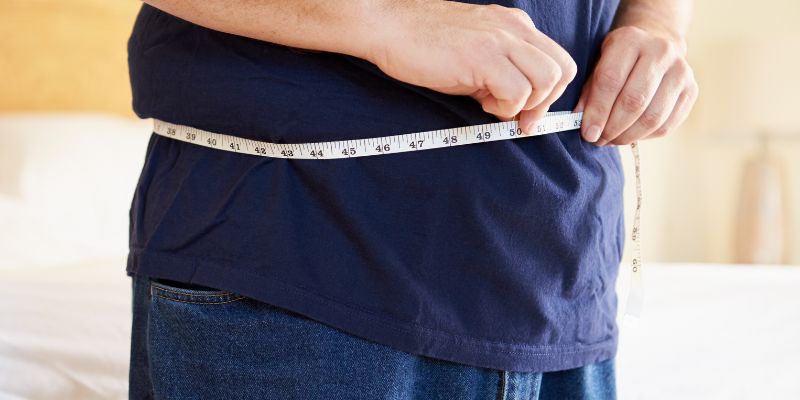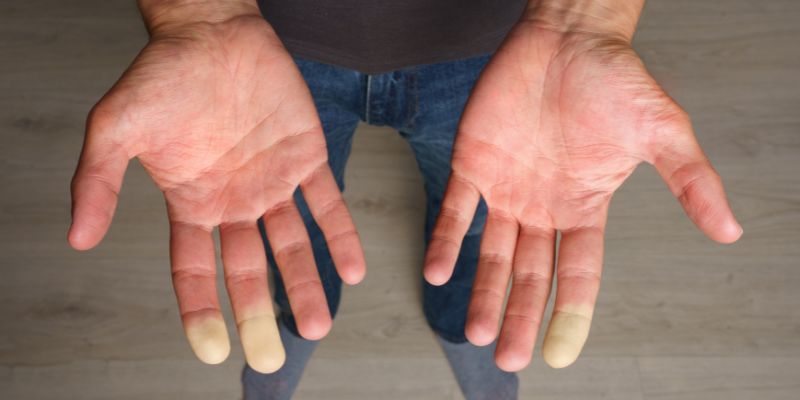Advertisement
Measuring your waist circumference is an easy but vital task. It offers insightful analysis of your health and diabetes and heart disease risk profile. Understanding correct waist measurements will enable you to monitor changes in body composition or weight reduction.
In this article, we will discuss proper waist circumference measurement. Use these simple guidelines to produce consistent findings. Let's start on this path toward improved health!

One of the simplest approaches to monitoring your health is measuring your waist circumference. This assessment shows the degree of abdominal fat connected to increased metabolic illness risk. Accumulating fat around the waist raises a risk for disorders including type 2 diabetes, heart disease, and hypertension.
Though your BMI alone cannot classify you as overweight, your waist size can be a health indicator. Measuring waist circumference helps you monitor changes across time. An abrupt change in size could indicate any medical issues. Regular monitoring can be the first sign of changing your way of life, including dietary adjustments or more physical exercise.
Get ready by compiling the following basic instruments first:
These objects can be found at home or affordably bought. Consistent use of the same tape measure is crucial. Steer clear of metal or inflexible rulers since they won't naturally curve around your body.

Having your tools now, let's go through the procedure:
Identify The Appropriate Location:
Take The Measurement:
Doublecheck For Accuracy:
Record The Result:
Following these guidelines will guarantee consistent waist measurements every time.
Here are some more pointers to enable you to get an accurate waist measurement guide:
Tracking your waist circumference calls for both consistency and patience. Every time, using the same approach guarantees that you will be able to observe actual changes instead of fluctuations brought about by different measuring methods.
Maintaining your health requires constant awareness of your waist size. But on what frequency should you measure? Usually, tracking slow changes calls for a weekly or biweekly measurement. Check more often if you are actively working on weight loss or health improvement.
Measuring following major lifestyle adjustments is also a smart idea. For instance, track your waist after a few weeks to determine whether changing your food or beginning a new exercise program has any effect. Never forget: one measurement is insufficient to ascertain general health. Rather, concentrate on changes over time.
Your waist size may reveal your risk for numerous health issues. Higher waist circumference (greater than 35 inches for women and 40 inches for men) indicates an increased risk for health problems, including:
Since waist circumference targets abdominal fat, which increases risks more than fat in other regions, using it as a health metric can be more dependable than BMI.
Along with other body metrics, including BMI, waist-to-hip ratio, and body fat percentage, waist circumference is a useful consideration. They differ in this manner:
Although all these tests are important, waist circumference provides an easy and consistent method to evaluate abdominal fat and related health hazards.
Though there isn't a one-size-fits-all solution, there are broad recommendations for waist circumference:
These suggestions are based on studies showing higher waist sizes and correspondingly higher health risks. Still, waist circumference is only one aspect of general health; other factors also matter. See a healthcare professional to discuss your measurements and any concerns.
One easy yet efficient approach to keeping on top of possible hazards and monitoring your health is measuring your waist circumference. These simple waist measuring steps will help you guarantee consistent and accurate measurements. Along with a good lifestyle, regular monitoring helps you keep a good waist size and lowers your risk of diabetes and heart disease. Learning to gauge your waist can help you take charge of your health right now!

By Korin Kashtan/Feb 08, 2025

By Sid Leonard/Feb 28, 2025

By Maurice Oliver/Dec 15, 2024

By Martina Wlison/Nov 02, 2024

By Noa Ensign/Nov 10, 2024

By Madison Evans/Apr 01, 2025

By Paula Miller/Apr 01, 2025

By Sean William/Oct 14, 2024

By Georgia Vincent/Oct 11, 2024

By Triston Martin/Dec 07, 2024

By Isabella Moss/Nov 20, 2024

By Triston Martin/Oct 09, 2024